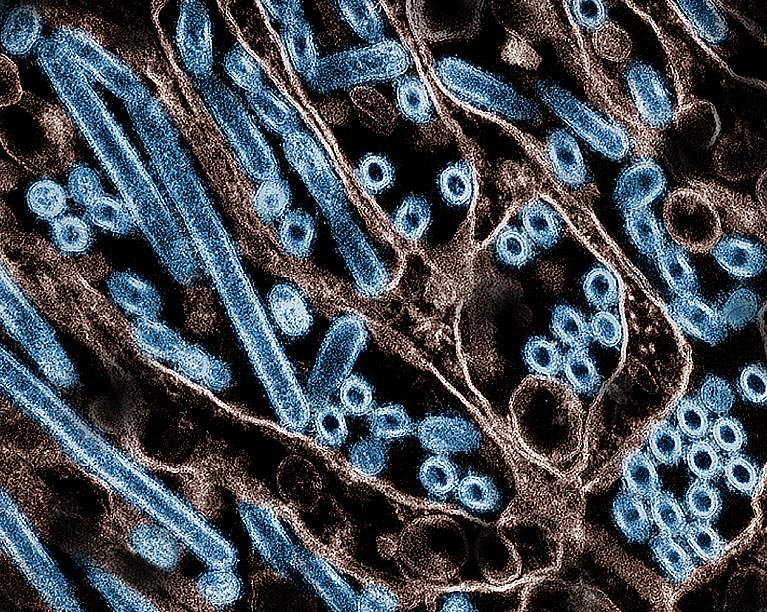
A single modification in the protein found on the surface of the highly pathogenic avian influenza (HPAI) H5N1 influenza virus currently circulating in U.S. dairy cows could allow for easier transmission among humans, according to new research funded by the National Institutes of Health (NIH) and published today in the journal Science.
The study results reinforce the need for continued, vigilant surveillance and monitoring of HPAI H5N1 for potential genetic changes that could make the virus more transmissible in humans.
Current strains of the bovine (cow) H5N1 virus are not known to be transmissible among people; however, infections have occurred in people exposed to infected wild birds, poultry, dairy cows and other mammals. As part of pandemic preparedness efforts, researchers have monitored the H5N1 virus for years to understand viral genetic mutations that occur in nature and what impact they may have on transmissibility.
Influenza viruses attach to cells with a surface viral protein called hemagglutinin (HA). The HA latches on to sugar (glycan) molecule receptors on cells to cause infection. Avian (bird) influenza viruses—like H5N1—have not infected people often because the human upper respiratory tract lacks the avian-type cell receptors found in birds. Scientists are concerned that viruses could evolve to recognize human-type cell receptors in the upper airways and acquire the ability to infect people and spread between them.
Scientists at Scripps Research used the H5N1 strain isolated from the first U.S. human infection with the bovine strain 2.3.4.4b (A/Texas/37/2024) to test how mutations in the HA gene sequence affected the binding of that protein with avian versus human-type cell receptors. The researchers introduced several mutations into the viral HA protein that had been observed to occur naturally in the past and found that one mutation, called Q226L, improved the ability of the protein to attach to receptors typically found on human cells, especially when an additional mutation was present. Importantly, the researchers introduced the genetic mutations only into the HA surface protein and did not create or conduct experiments with a whole, infectious virus.
The experimental finding with the Q226L mutation alone does not mean HPAI H5N1 is on the verge of causing a widespread pandemic, the authors note. Other genetic mutations would likely be required for the virus to transmit among people. In the setting of a growing number of H5N1 human cases resulting from direct contact with infected animals, the findings stress the importance of continued efforts at outbreak control and continued genomic surveillance to monitor for the emergence of HPAI H5N1 genetic changes and maintain public health preparedness.
The research was funded in part by NIH’s National Institute of Allergy and Infectious Diseases (NIAID), through its Centers of Excellence for Influenza Research and Response program.
ARTICLE:
T H Lin et al. A single mutation in bovine influenza H5N1 hemagglutinin switches specificity to human receptors. Science DOI: 10.1126/science.adt0180
